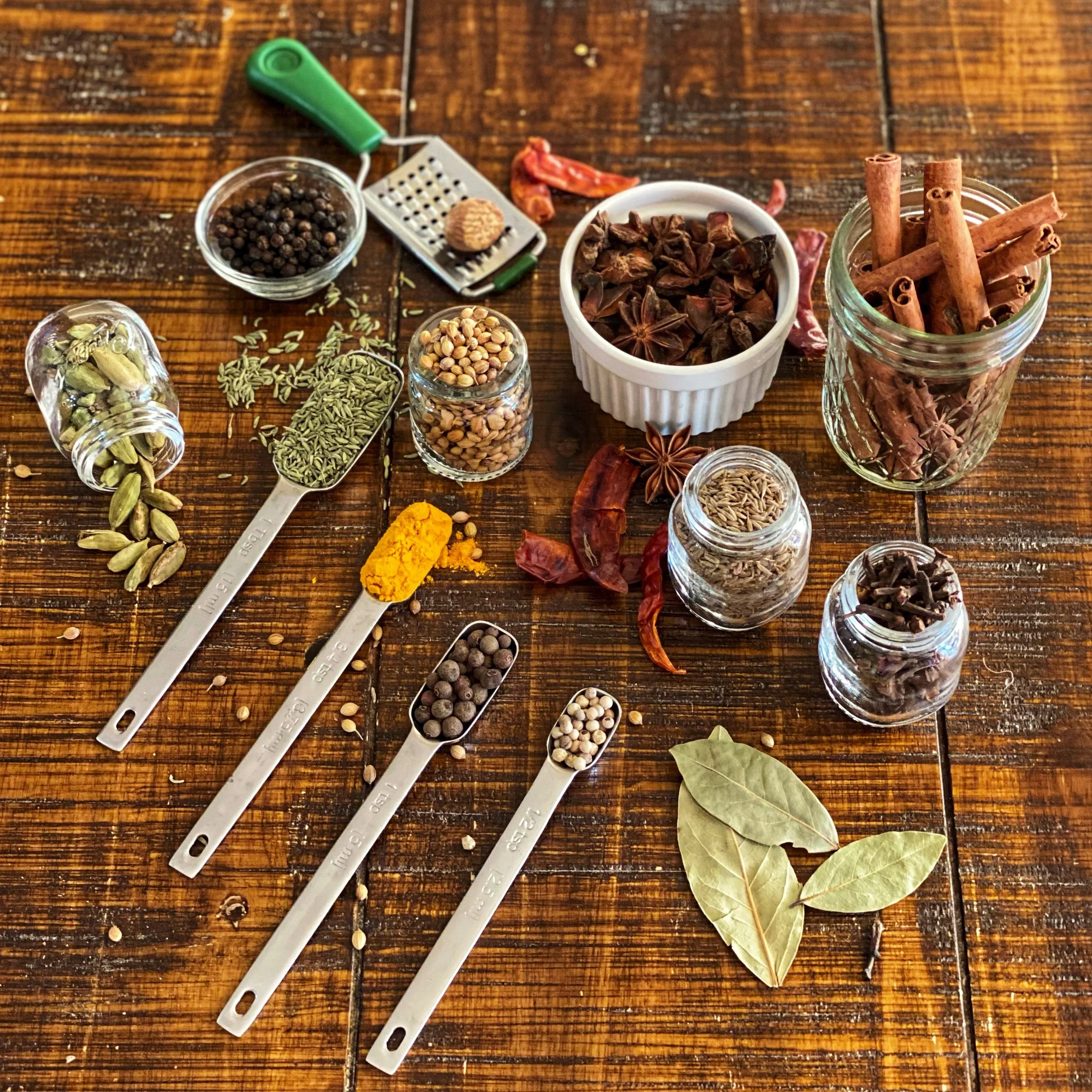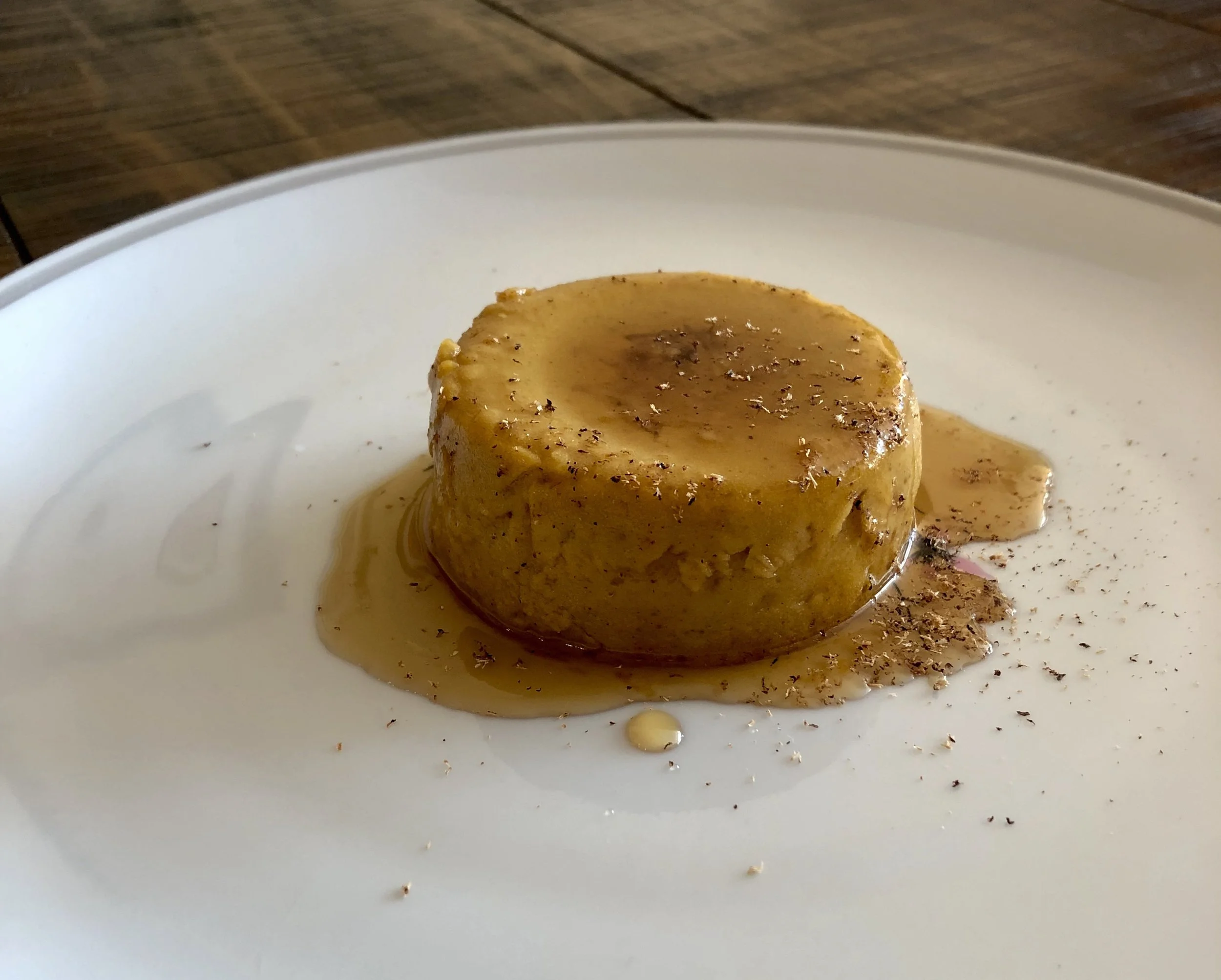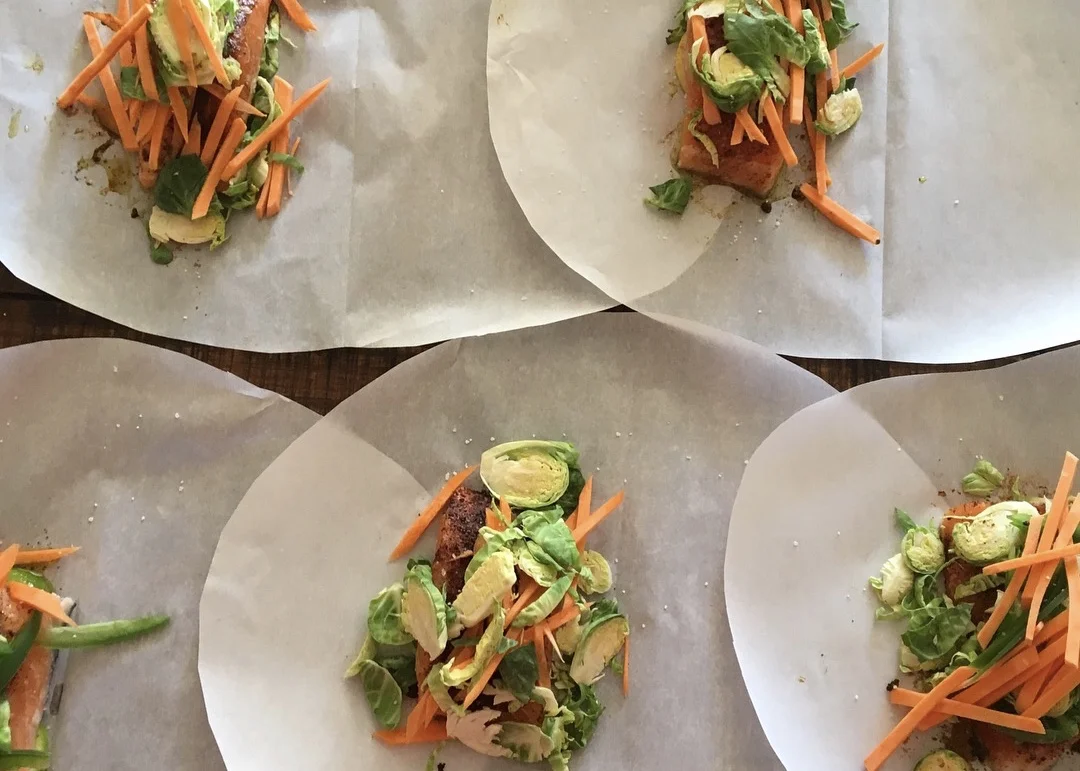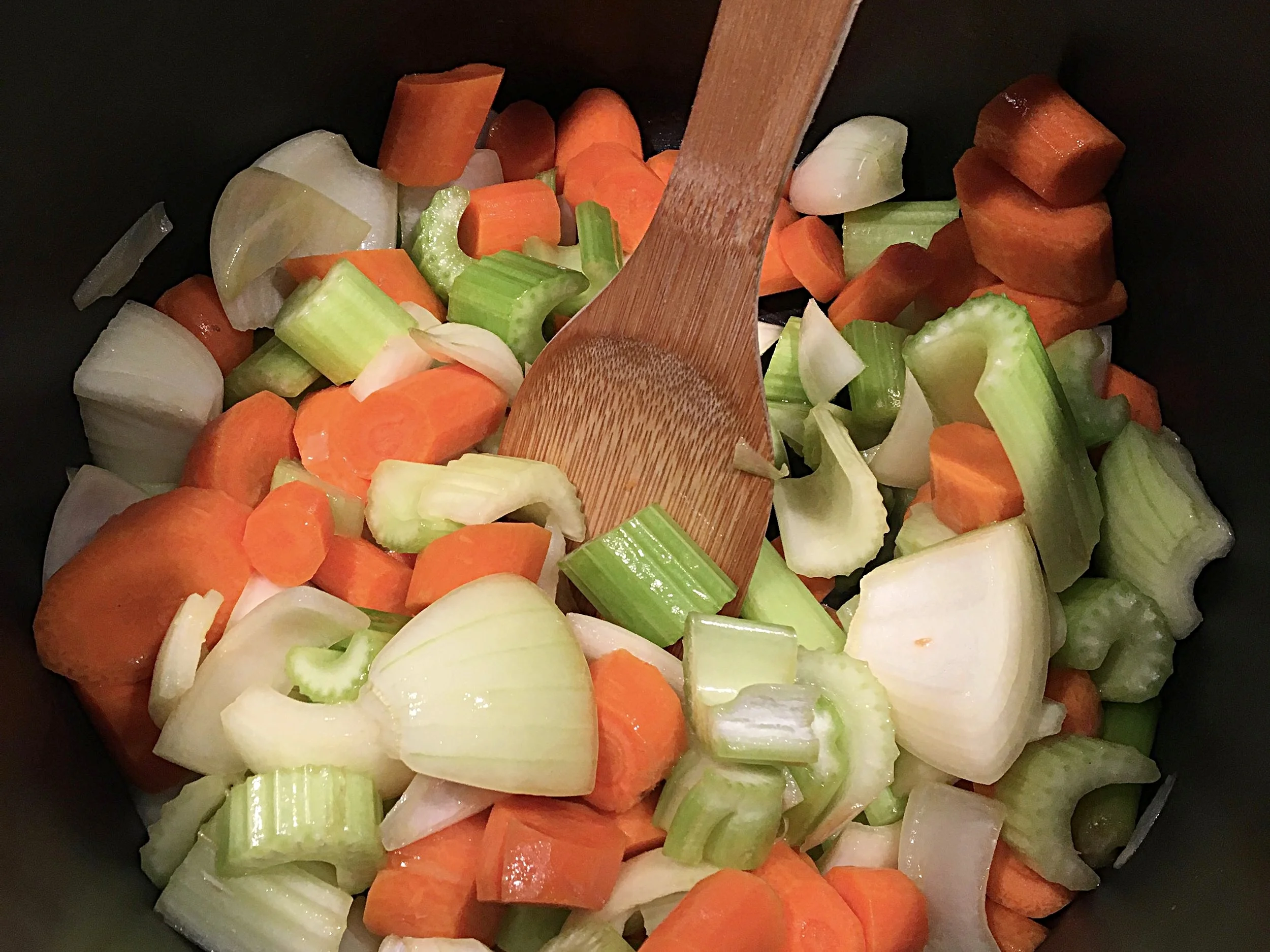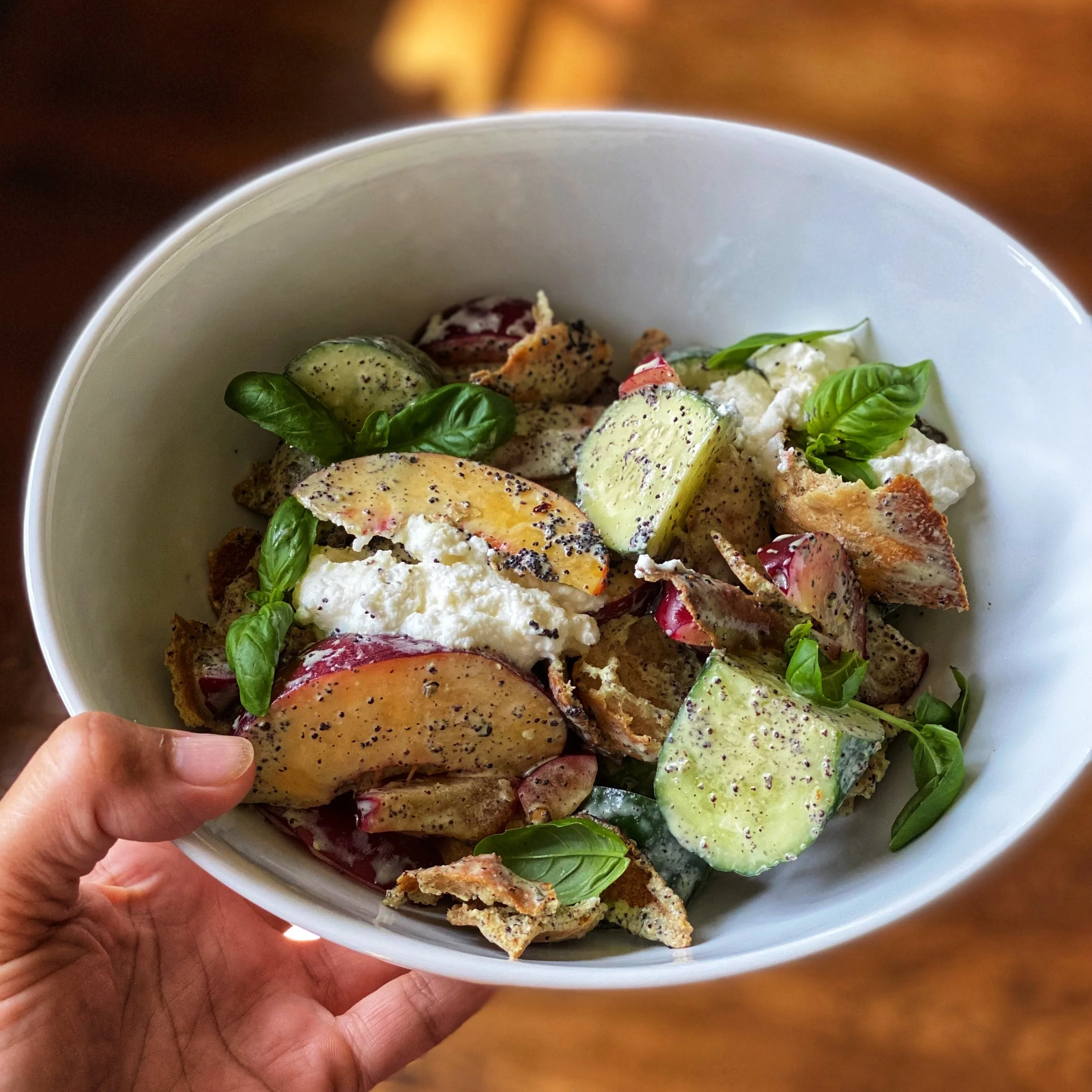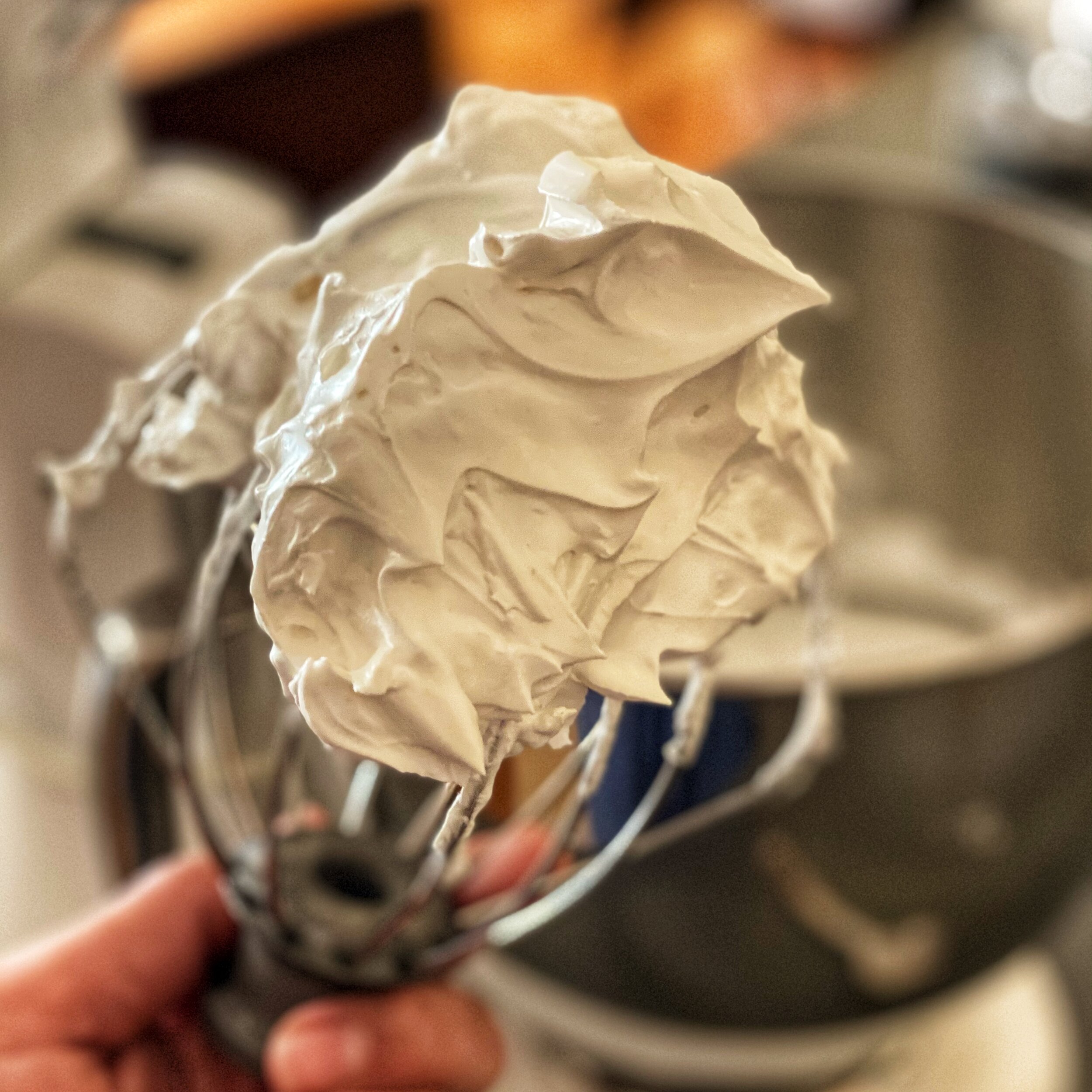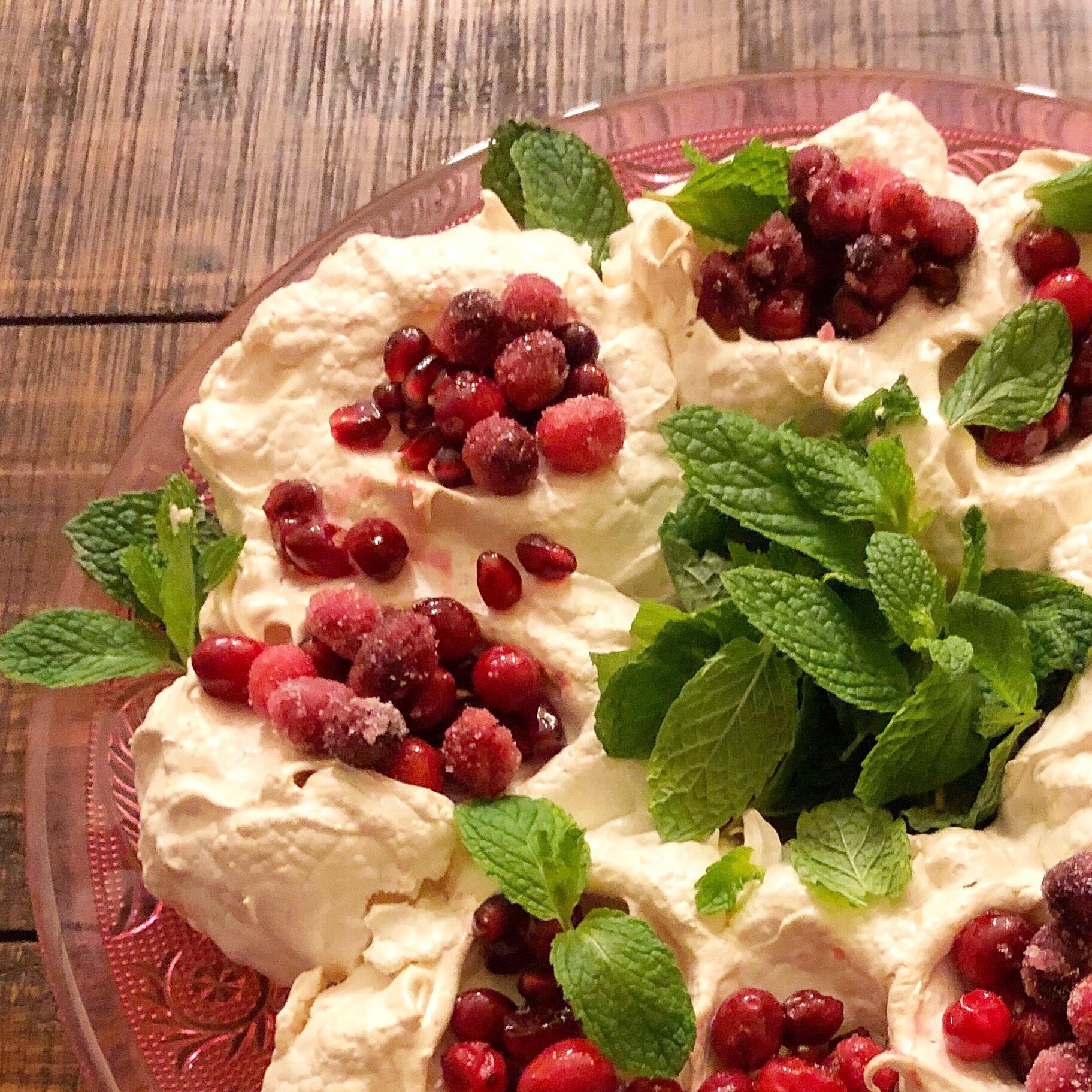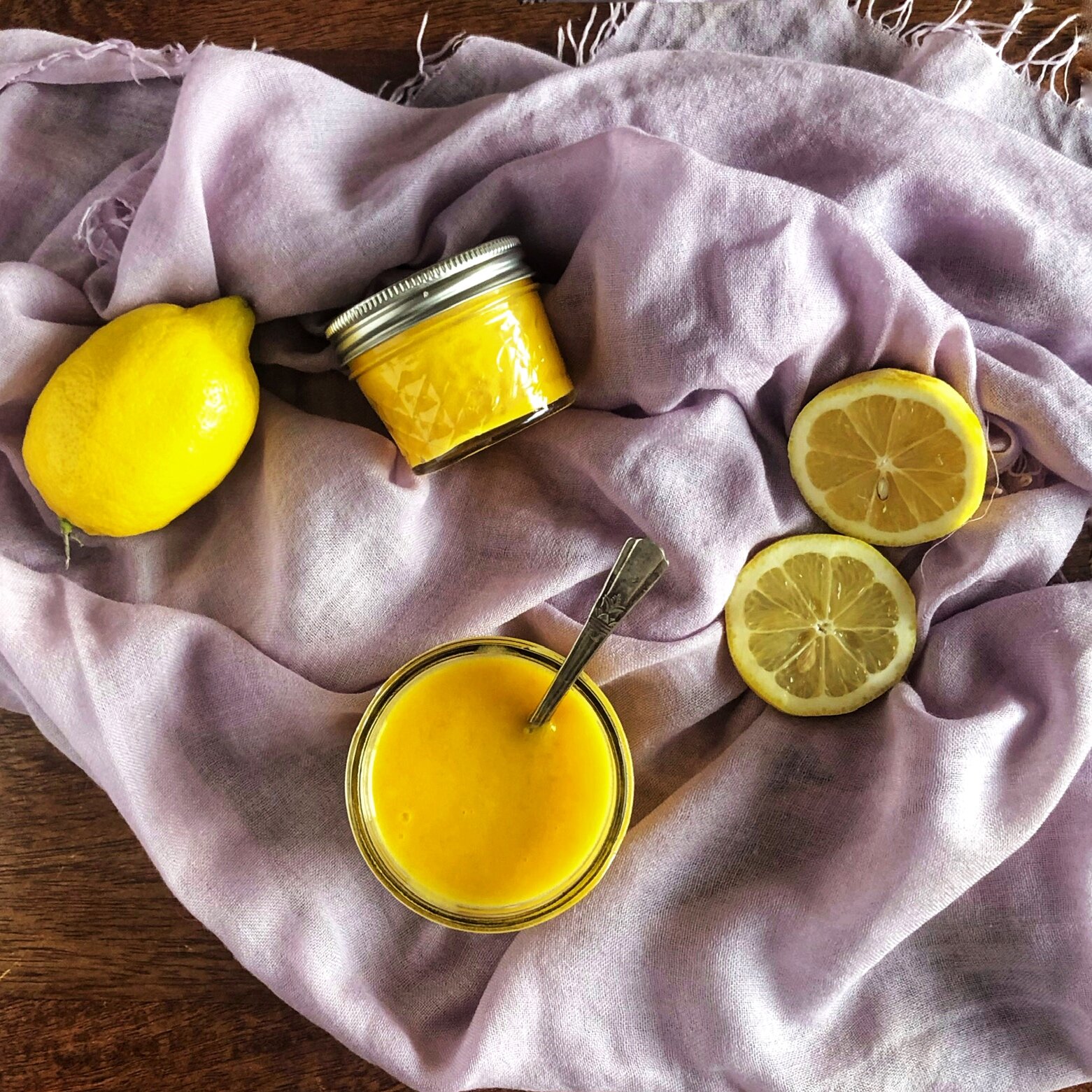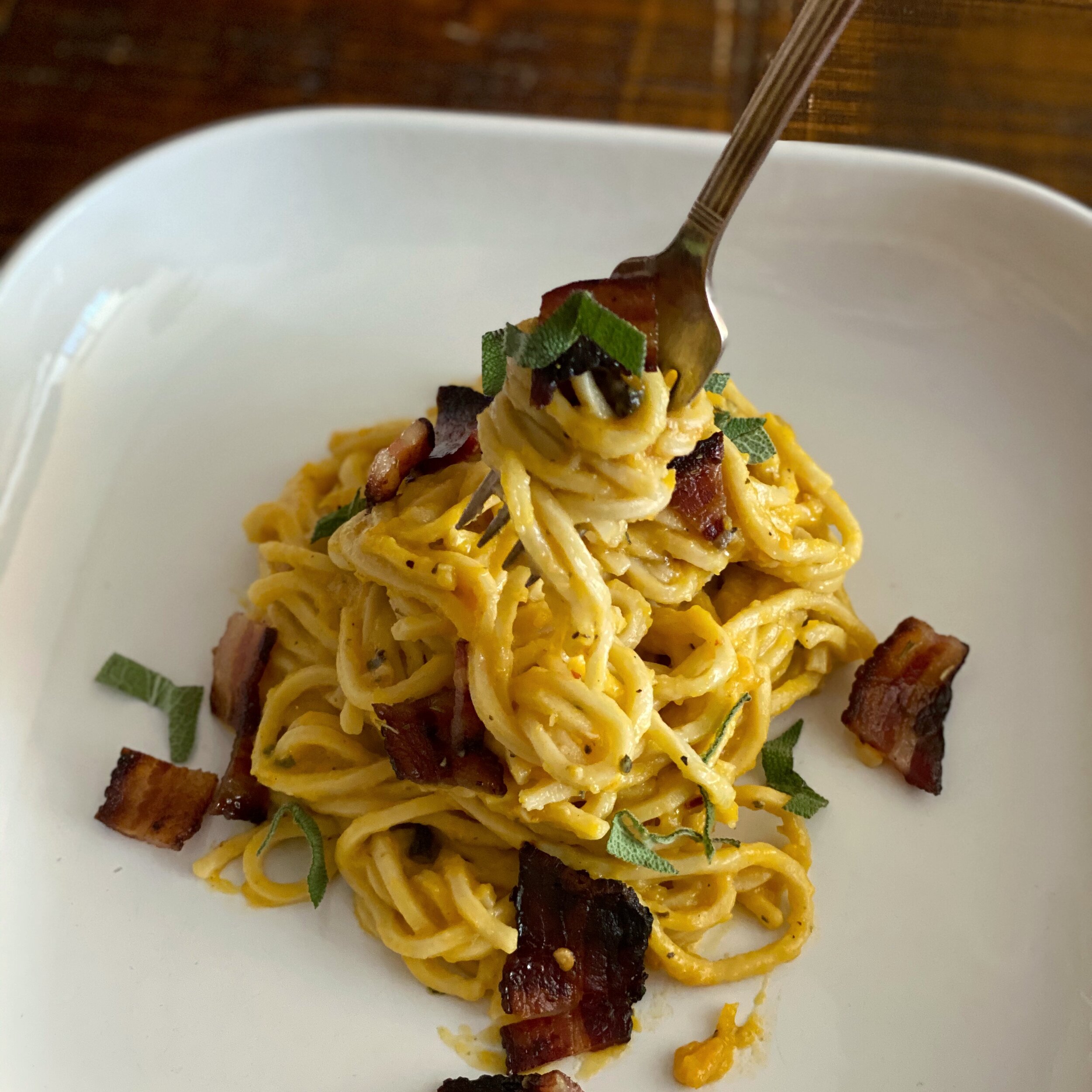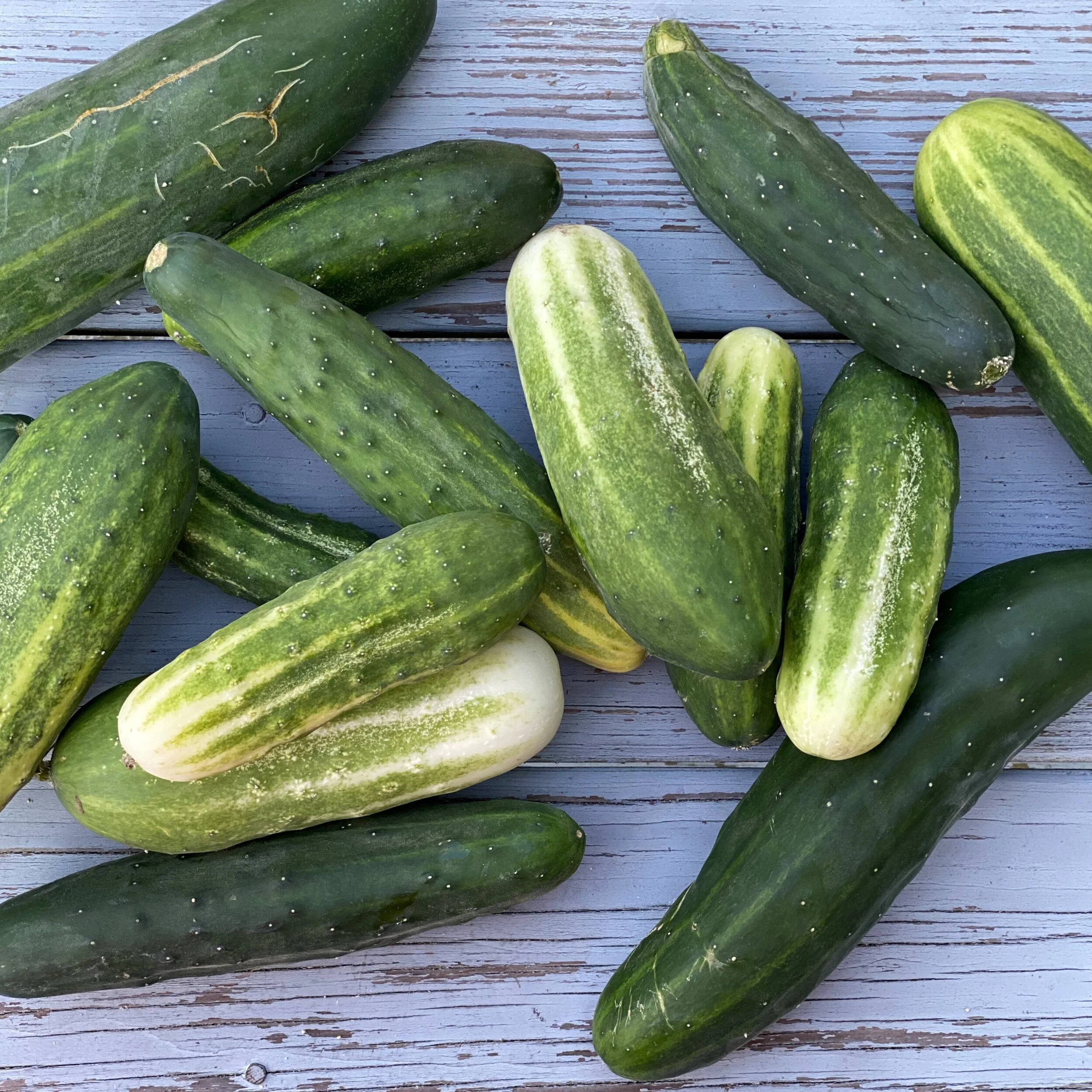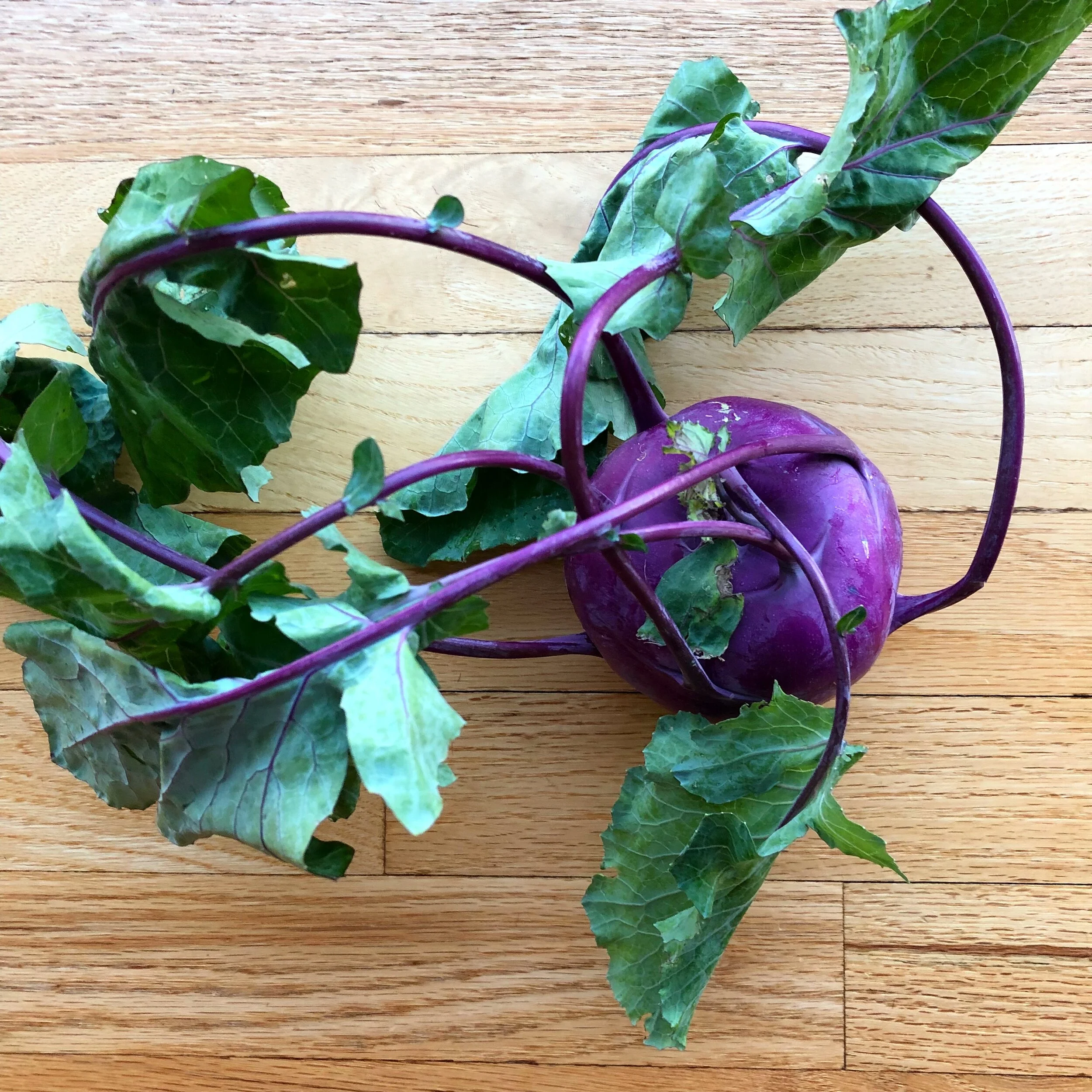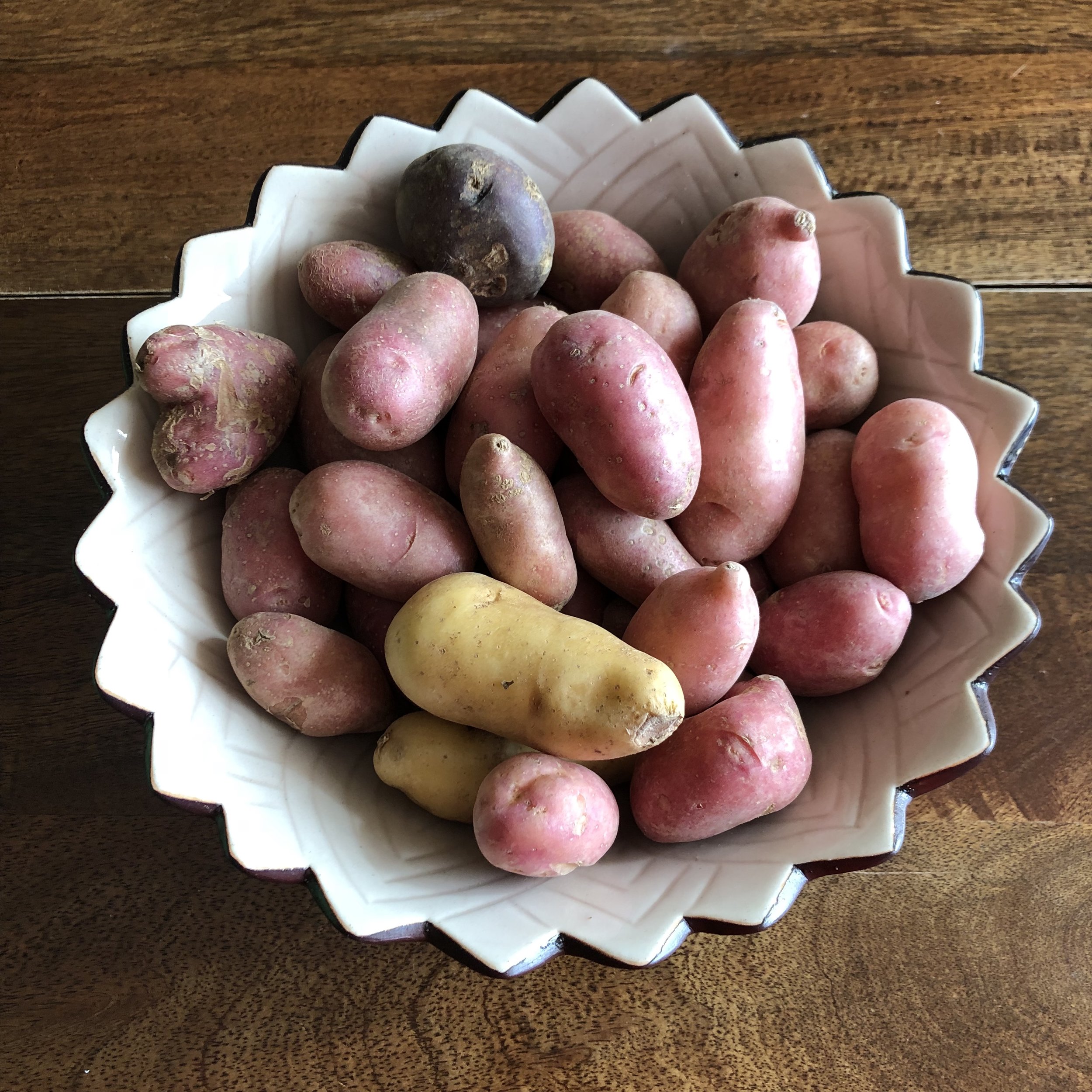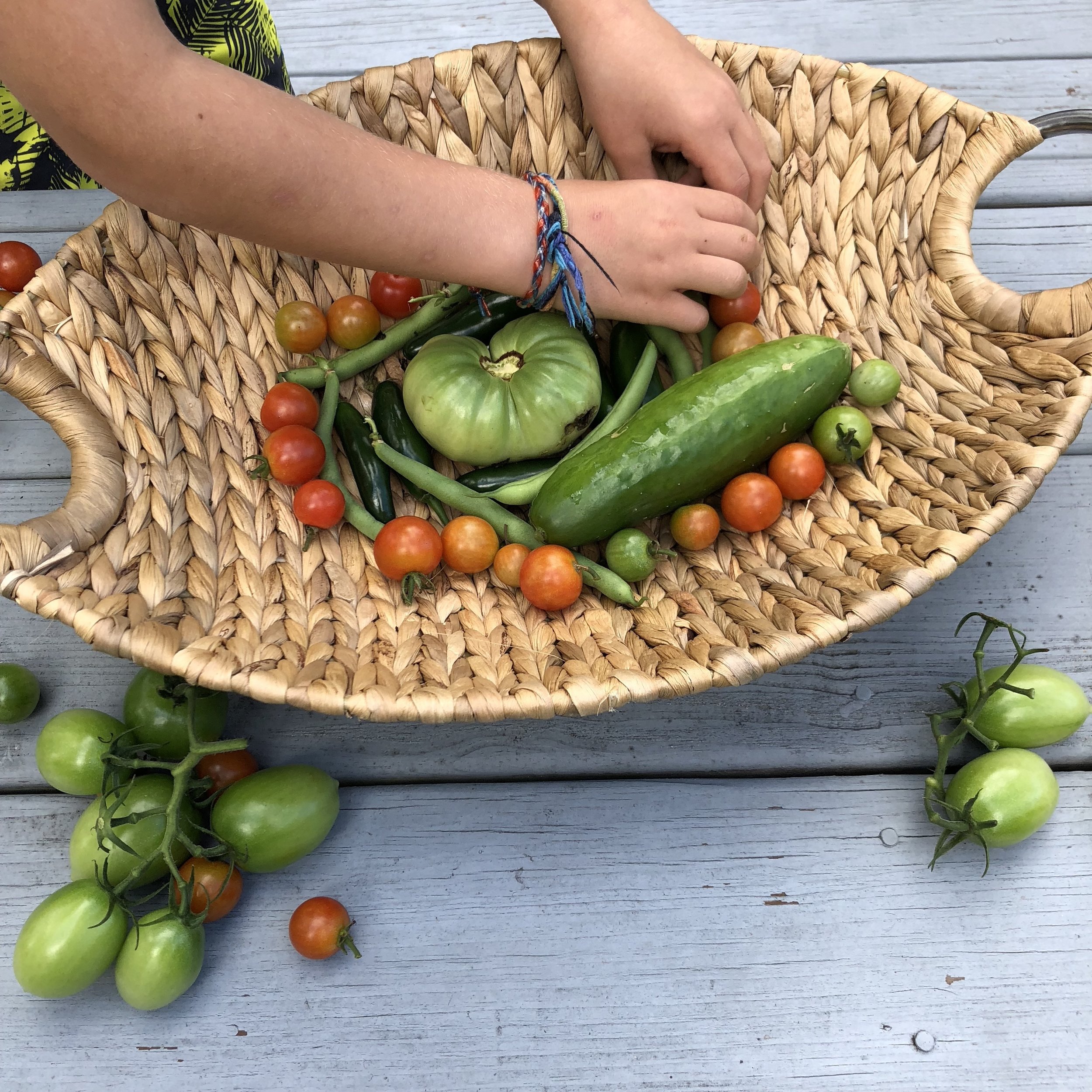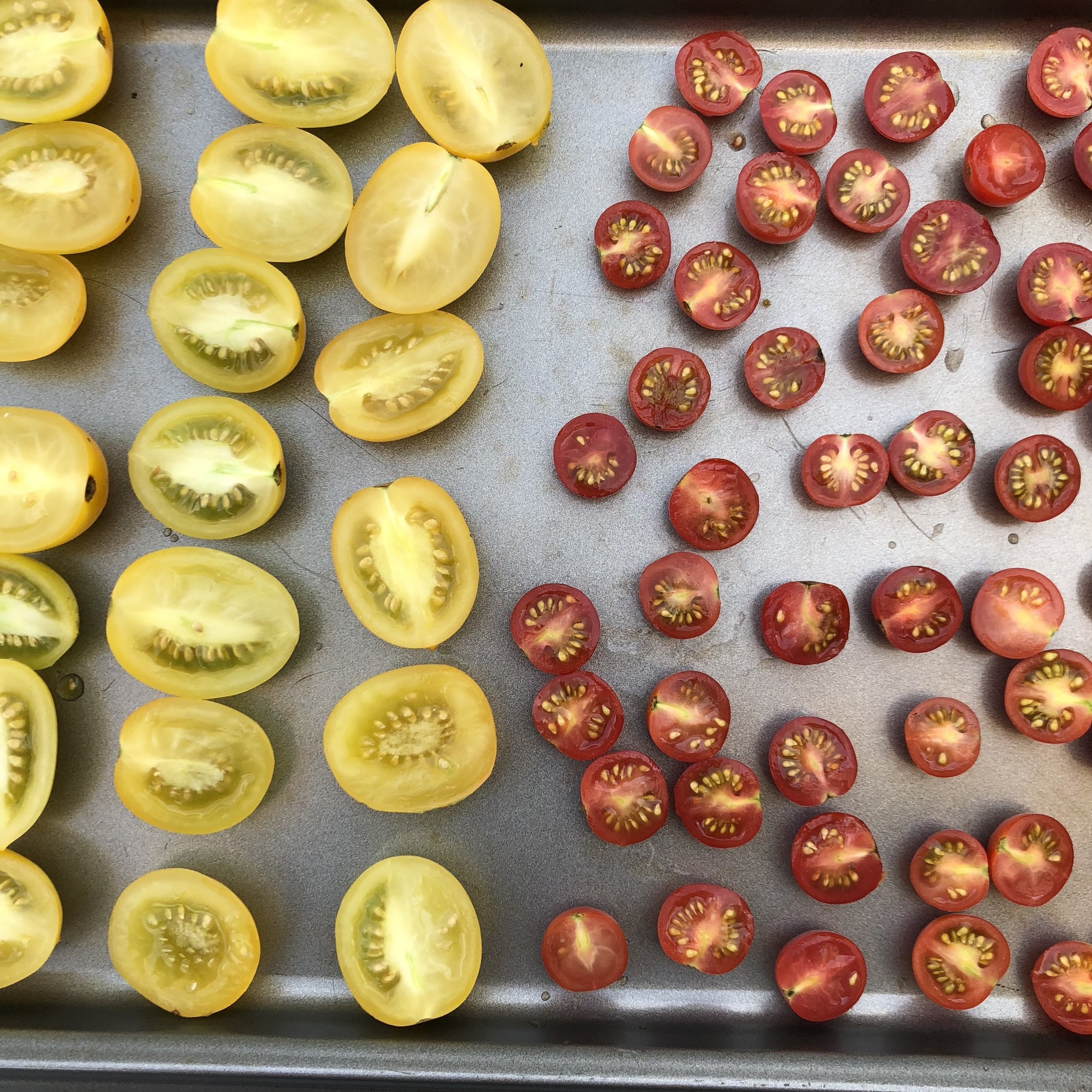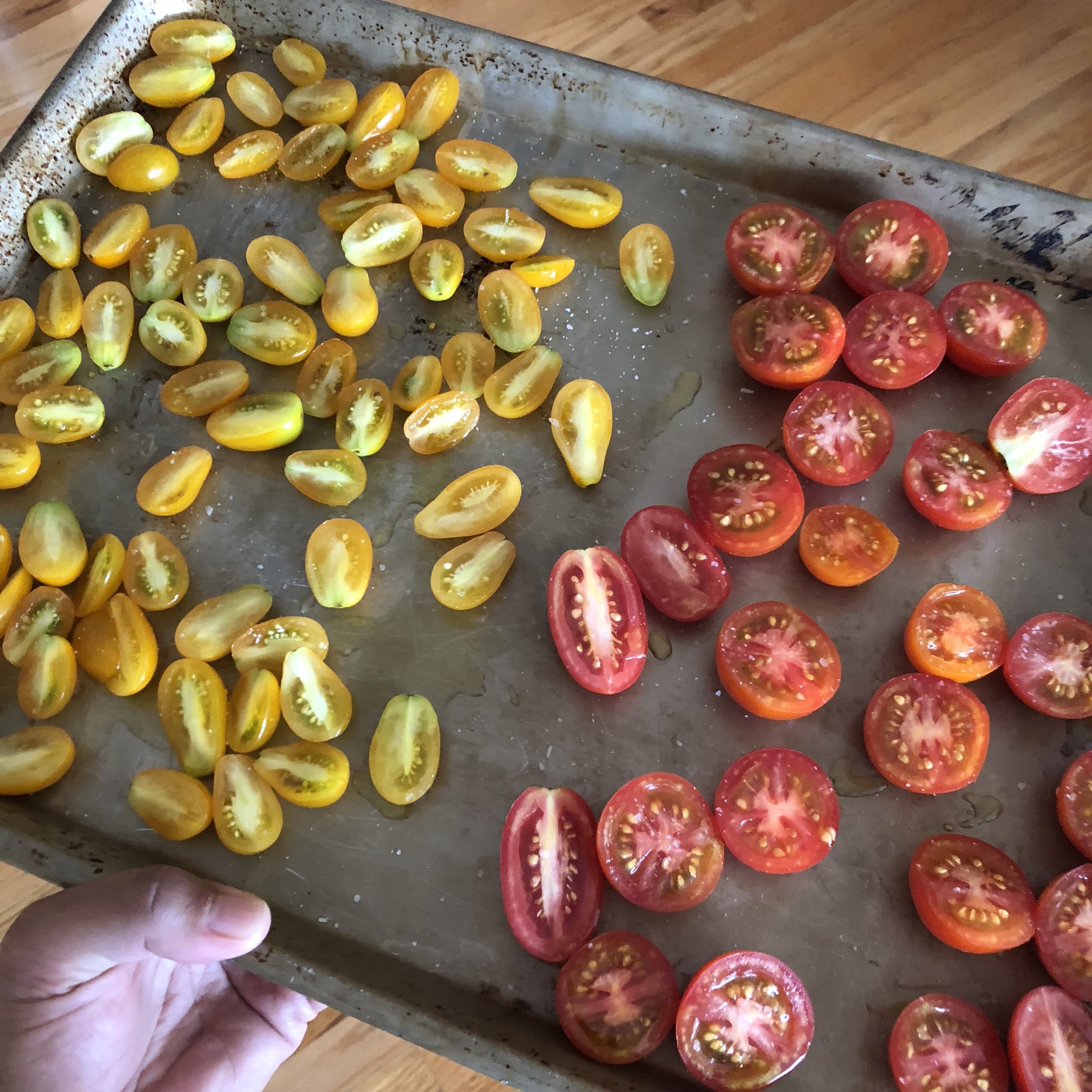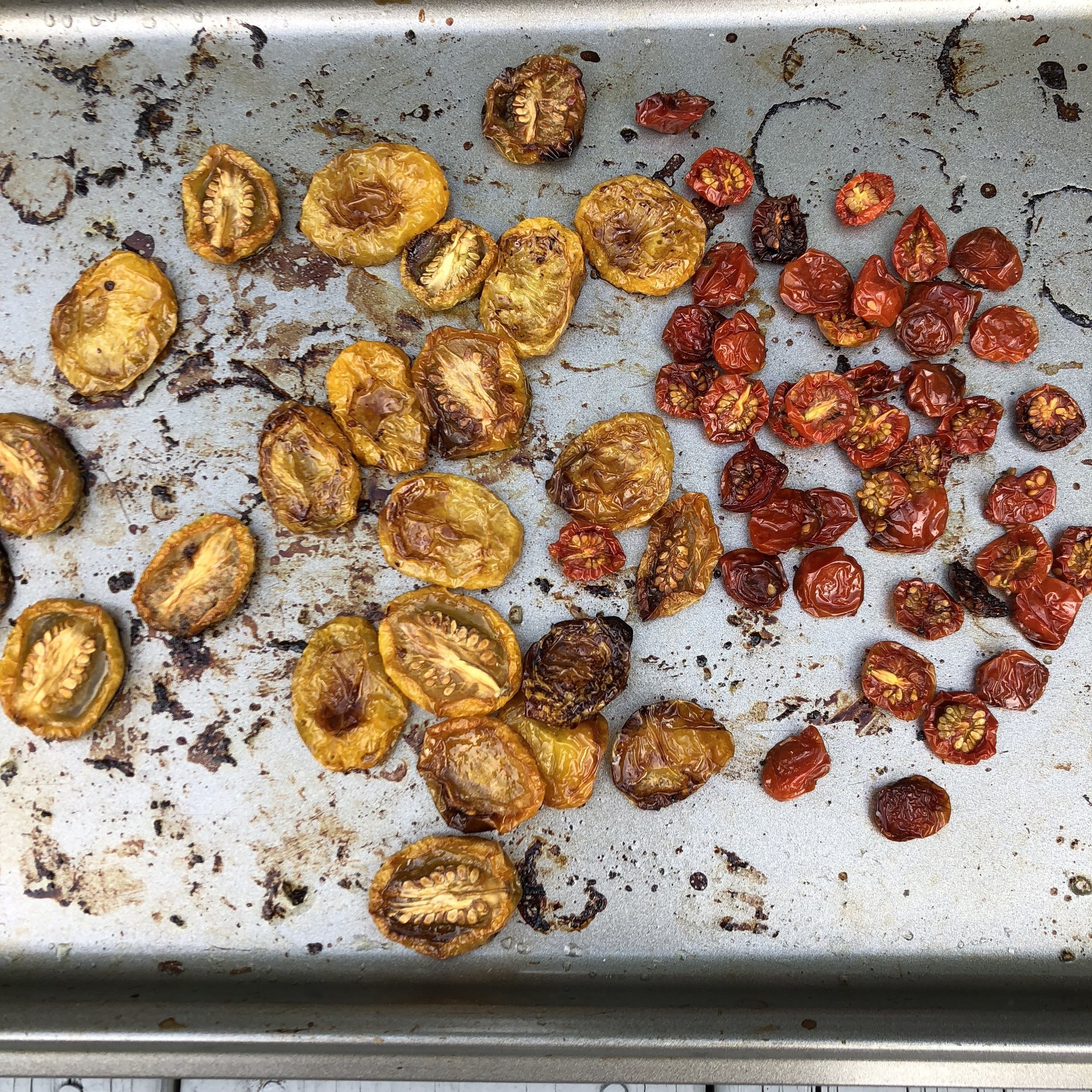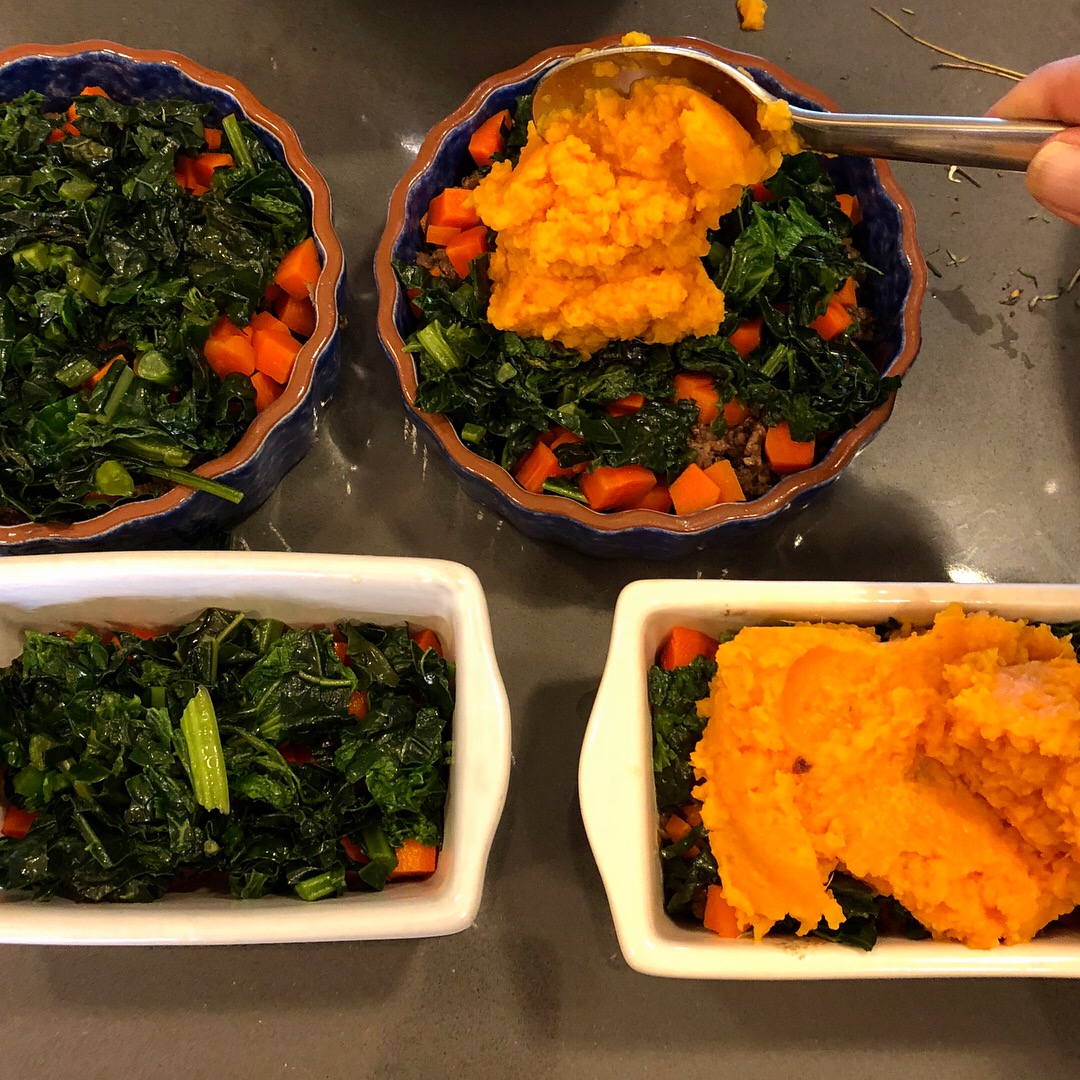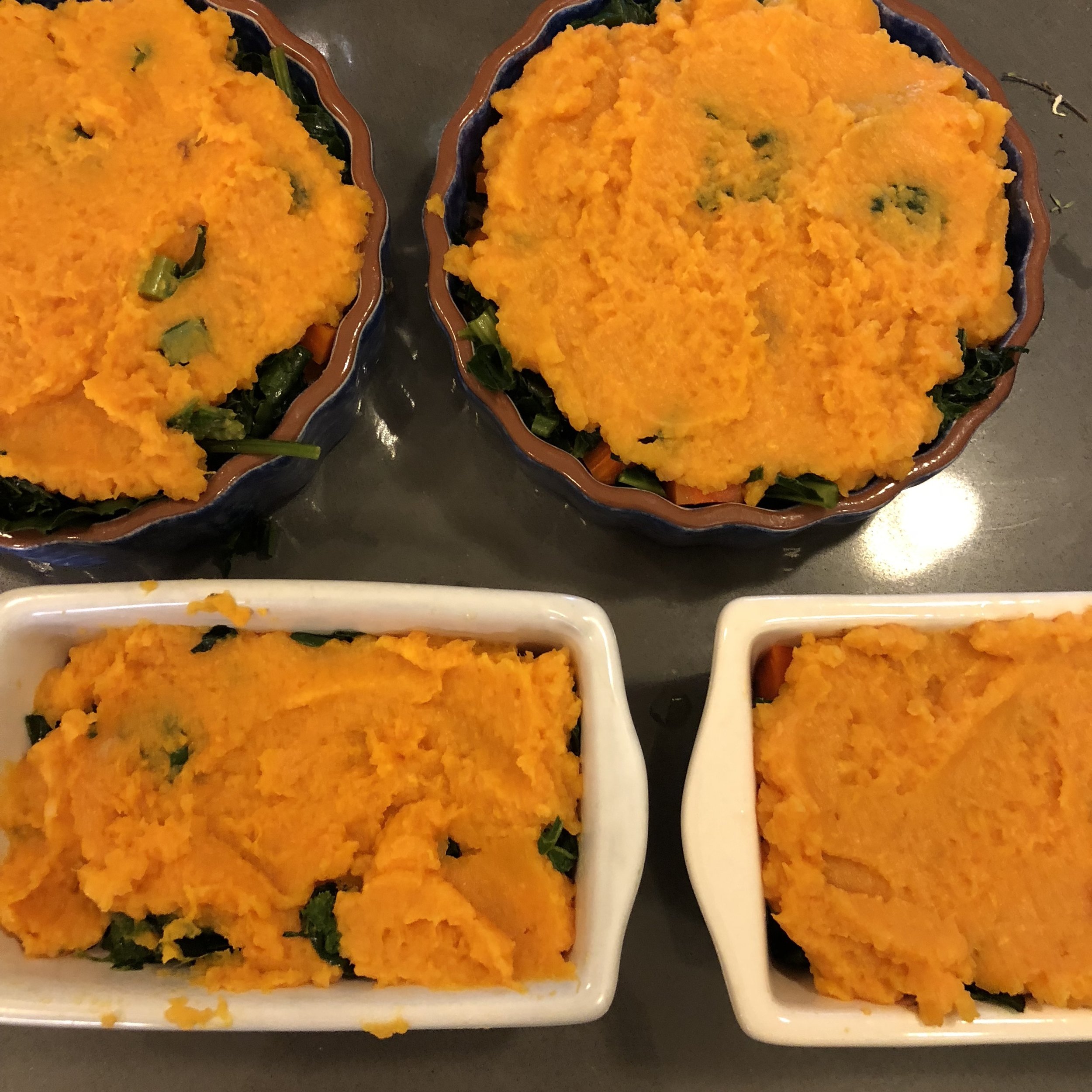This Basil Poppy Seed Yogurt Dressing comes together in a flash. Puree everything together in a blender until smooth. Yogurt, lemon juice and olive oil give it a tangy and creamy, yet not heavy base. It's flavored with basil and crunchy with poppy. It works on everything from tomato sandwiches to grilled bok choy and stone fruit salads.
Use Your Eggs
photo by Miguel Andrade
For about 2 years, a PSA plastered to the bus stop on my corner got me to eat my eggs. From the poster, I learned: it takes 53 gallons of water to produce a single egg. That’s right, 53 gallons for 1 egg. It’s staggering. Would you dump out 53 gallons of water for no reason? So don’t waste those eggs, okay? For all their uses, and due to their lengthy fridge shelf life, it’s unlikely that we will squander a whole untouched egg, unless broken accidentally (see more about that below). The challenge is utilizing separated yolks or whites when one or the other is called for in a recipe.
Below, I’ve compiled my favorite ways to use either extra whites or extra yolks, always within a few days of separating them. I’ve linked to my own recipes where available on my blog, and will add to this as more are published. Reach out for recipes not yet added to my website. I’m happy to pass along.
Please share you own ideas for using eggstra whites or yolks or even partially used whole eggs in the comments section below.
Eggstra Whites? Make…
Meringue - the cookies, the pie topping, the Swiss buttercream
Pavlova - basically, a giant meringue
Marshmallows and Marshmallow topping - get me s’more, baby!
Fortune cookies - press your luck with the quick folding technique
Macaroons and Macarons - yolkless is something these closely named cookies have in common. Or try Mandelhoernchen, an almond version of meringue cookies.
Matzo Balls - no yolks needed
Angel food cake - like the cloud she floats on
Candied Nuts - this one blew me away
Even Crunchier Granola - optional, for when you have an extra white lying around
Cocktails - like the Pisco Sour or Gin Fizz
Meatball, Veggie Patty or Dumpling Filling - just holding it all together
Souffle - chocolate is great, but have you tried cheese?
Add to any situation when using scrambled eggs to make it lighter or add protein
Eggstra Yolks? Make…
Hollandaise, Bernaise, Mayonnaise, or basically anything ending in aise? or Aioli
Pasta - add extra eggs to the dough or get fancy and fill raviolo with an egg yolk
Challah or enriched breads
Custard, Creme brulee, or Pot de creme
Zabaglione or pastry cream
Pasta Carbonara
Bread Pudding or French Toast
Tiramisu
Duchess Potatoes - did you know there was an even better way to enjoy mashed potatoes?
Ice cream - extra yolks are as good excuse as any to make ice cream
Curd - lemon, lime, passion fruit, any fruit
Eggnog
Short Crust Pastry
Egg yolk soup- like Chinese egg drop or Greek Avgolemono (lemon rice soup)
Add to any situation when using scrambled eggs to make it richer or add fat
Sparing Whole Eggs:
If an egg does accidentally crack or even break, all hope is not lost. If you saw it happen, and it was less than an hour or so, pick out the shell and transfer that cracked egg to an airtight container. Keep it refrigerated until you can use it, or within a few days. Don’t worry about any bacteria it might have picked up on the countertop or from outside its shell when it broke. Any harmful bacteria would already be on the inside anyway and needs to get cooked thoroughly before you eat it.
Same goes for if you are separating eggs and yolk bleeds into whites or vice versa — just transfer to an airtight container and make a mental note to use it first the next time you need a whole egg.
Same goes for a beaten egg from an egg wash. If you have a bit remaining, add it to your next batch of scrambled eggs, french toast batter, or meatball mixture. Or just pop it in the microwave for 15 seconds with salt and pepper and have a protein rich snack while you bake.
Cool as a Cucumber
Kohlrabi Clarified
This space-like brassica bulb tends to baffle even the most adventurous vegetable eaters. Here’s a quick list of ideas for your bounty of bulbs, concluding with my recipe for Kohlrabi Latkes that will have you looking for kohlrabi at the grocery store (good luck with that).
Tuber Tutorial
Although we enjoy our potatoes year-round, their chance to shine starts with Thanksgiving and continues through the cooler months, when we gobble up this “storage” crop.
Years ago, while studying abroad in Nepal, I understood first hand what this meant. I arrived at one homestay in the snowy mountain region of Annapurna just after the potato harvest and actually had the privilege of bunking up with the family’s potato stores. Those potatoes, overflowing from large wicker baskets in a cold dry loft above the hut would last them through the cold winter, primarily boiled and dipped in Himalayan salt.
Here, we treat ourselves to mashed potatoes at the holidays, incorporate them in our winter stews and roast them alongside chickens for Sunday dinner. Nothing says winter comfort food quite like a potato. But there are as many varieties of potatoes as dishes we make with them.
Farmer Ted (our CSA hero farmer from upstate NY) supplies at least 7 varieties each year, not even including the sweets and yams. I'm often asked, what's the difference between all of these spuds. I mean, a potato is a potato, right? Right. Um sorta. So why do I need all of these different varieties?
Well, each variety provides different nutrients and things we need for optimal health. You could read up on it in Jo Robinson's impeccably researched book, "Eating on the Wild Side" or you could just take my word for it. Okay, so variety of potatoes, yah, yah, yah, can I just cook them all the same way? Sure, you could. Potatoes are delicious pretty much any way you slice 'em, or roast them or boil them or you get the picture, but in my kitchen experience, I have found that some potatoes just lend themselves better to certain things than others...
Fingerlings of all shapes and colors are best when halved (or kept whole if really tiny), tossed in olive oil and salt and roasted in a hot oven (say 400 degrees) until crisped on the outside. I like adding fresh or dried hearty herbs like rosemary, whole garlic cloves, and whole spices like cumin seeds to mine too. These are also the best variety for slicing thinly for a tart, to top a pizza or elevate a salad.
Russet potatoes: there's a reason you often see these baked whole at steak houses. They make the best baked potatoes and vessels for all of those toppings, like butter, sour cream, cheese, broccoli, bacon, and of course they are great for twice baked or stuffed potato skins. But what you might not realize is that leftover baked Russet potato flesh is perfect to form into gnocchi, or mix into croquettes or veggie burgers. They don't add too much moisture and their starches are useful for binding other ingredients together.
I use Yukon golds and red potatoes in pretty much everything else, like all sorts of mashed potatoes - garlic mashed, sour cream and chives, with gravy, I'm drooling for Thanksgiving now. Justifiably so, they go by the term “creamer” potatoes in some places. They are also my go to for chowders, all stews including My Dad’s Beef Stew, my Auntie Sheila's Puerto Rican Rice and Beans recipe, latkes, and for filling pierogi.
As we near Thanksgiving 2018, I feel compelled to provide an important public service announcement in regards to potatoes. Whichever variety you use for your mashed potatoes (although I recommend the yukon golds or reds), please DO NOT whip those potatoes with an electric mixer nor put them into a food processor. You may think this will help get a smooth and creamy consistency, it WON’T. While your potatoes may end up “lump free” they’ll be so gummy and gluey that you won’t be able to appreciate the absence of lumps. If you really want to make a mash in a food processor, then consider Creamy Mashed Cauliflower instead.
Green Tomato Envy
As the longer days and warm weather winds down, the final baskets of heirloom red tomatoes and rainbow colored cherry tomatoes are available at farmer’s markets. Scoop them up while you can. However, you can rest assured that green tomatoes will appear over the next couple of weeks. I’ve got you covered for what to do with those green tomatoes - and it goes beyond frying ‘em.
Acknowledging their fate, I plucked quarts of green tomatoes from my tomato plants last weekend. They will never realize their potential colors promised on the seed packets. And that’s okay. I’m appreciative for the shorter days and cooler temps, especially when I dream up all of the good eats from these firm and punchy green ovals. I started with this tangy and spicy green tomato chutney. Over the weekend, we ate it with grilled pork chops, but it’s also delicious alongside this Bengali Red Lentil Dal or just slathered on bread.
Tangy and Spicy Green Tomato Chutney
Yield: 1 ½ - 2 cups
What you need:
4 cups green tomatoes, chopped into about ⅛ inch pieces
¼ cup sugar (I used turbinado or raw sugar)
2 teaspoons salt
3-6 serrano chilis, jalapenos or other small green chilis, halved, seeds removed & thinly sliced
2 teaspoons coconut oil (optional)
⅓ cup honey
1 whole star anise
8 cardamom pods
2 tablespoons to ¼ cup lime juice
What you do:
Combine the tomatoes, sugar and salt. Allow to sit for 30 minutes to 1 hour, stirring occasionally.
Strain the liquid from the tomatoes. Discard the liquid and transfer the tomatoes to a medium saucepan.
Add the sliced chili peppers, coconut oil, honey, star anise, and cardamom. Stir and bring to a boil. Reduce heat and simmer for 45 minutes.
Add lime juice to taste. Simmer another 10 minutes or until lime juice is reduced.
If chutney is not your jam, you might try these other ideas for an abundance of tomatoes, equally delicious with green tomatoes as well as their peak season rainbow colored cousins:
Emory enjoys arranging the bounty baskets even more than he enjoys picking produce from the garden
Here’s one of his arrangements.
Slow Oven Dried Tomatoes:
What you need:
tomatoes (any and all colors)
extra virgin olive oil
kosher salt or sea salt
garlic, dried oregano, dried basil, red pepper flakes (optional)
What you do:
Slice cherry and grape tomatoes in half.
Arrange in a single layer cut side up on a baking sheet. Drizzle with olive oil. Tip: If your olive oil comes out too fast or doesn’t drizzle nicely from the bottle, transfer some to a spoon or small liquid measuring cup and drizzle from that.
Sprinkle with kosher salt or sea salt.
Roast in oven at 200-225 degrees for at least 2 hours. Check at 2 hours. You want tomatoes to be shriveled and dried (see bottom photo on right). They should move easily around the pan when you shake it. Continue roasting, checking every 15-30 minutes until you reach this state. You can store in the fridge up to 3 weeks as is or in a jar of olive oil, with or without additional seasoning, like roasted garlic cloves, dried oregano, red pepper flakes or dried basil. You can also freeze the roasted tomatoes in oil for up to 6 months.
Tomato Jam:
I made a version of this sweet and spicy tomato jam, but I used about 3 lbs of tomatoes because that’s what I had. I reduced the amounts of other ingredients accordingly. In addition to tomatoes, my jam has ¼ cup apple cider vinegar, ½ cup Mike’s hot honey, ¼ cup orange blossom honey, ¼ cup turbinado sugar, ¼ cup white sugar, and ¼ teaspoon crushed red pepper. I basically followed the procedure and got 16 oz of jam (or four 4 oz ball jars). I want more! Increase the sugar if you use green tomatoes, unless you like a more tart jam.
Fresh Tomato Tart:
A classic tomato tart, like this one from Ina Garten is a beautiful picnic or fall potluck take along. Or try this one using green tomatoes that really seems more like dessert than a savory dish.
Fried Green Tomatoes:
There is no substitute for fried green tomatoes, so make some this weekend and share. I’m pretty sure I’m available. Call me. To make: Slice large green tomatoes into 1/4 - 1/2 inch thick rounds. Put them through a three step dredge: 1. Flour seasoned with salt and cayenne pepper, 2. Egg whisked with salt and black pepper, and 3. Coarse ground cornmeal (with more cayenne if you’re feeling spicy). Fry in canola oil until golden brown on each side, remove and set on paper towels to drain, and sprinkle with salt immediately.
Just a chef showing off her tomatoes, and getting some sun on her guns.
What's in my pantry?
Local seasonal cooking or the “use what you have method” is reliant upon a well-stocked pantry of easily adaptable staples. Since I often talk about what I find in my pantry to combine with unexpected pounds of fresh produce to assemble a quick dinner, many of you have asked, “what should be in my pantry?” As a chef, baker, and overall food enthusiast, my pantry is abnormally stocked with 6 types of rice, 8 varieties of flour, an assortment of oil and vinegar bottles and nearly 70 spices and dried herbs, and counting. What can I say, I love spices! However, for the purposes of this post, I asked myself, “what 10 items would you keep if you had to limit your ingredient indulgence?” In other words, below are the top 10 items I always have on hand.
Note: Your well-stocked pantry is going to have a lot to do with the type of cooking you do and the diet you eat [or aspire to eat]. This is my version.
Red Lentils (and Bengali Red Lentil Dal)
Freekeh
Dried Cranberry Beans
High Quality Extra Virgin Olive Oil - Mediterranean diet, need I say more?
Canola oil - sometimes you need a health supportive cooking oil that won’t impart olive flavor
Apple Cider Vinegar - when I thought about it, this is the vinegar I use most in sauces, dressings, marinades, and even stews and bone broth
Dry Pasta - with my Italian roots and carbohydrate loving family, we’re often one box of pasta and some veggies away from dinner
Coconut Milk - for a quick curry, a creamy soup, “nice” cream, or overnight oats, it’s good to have this stuff around
A variety of Spices but only those you’ll use within a year. In the spirit of this post, if I had to choose one and only, I’ll take crushed red pepper flakes, since I use them nearly every day.
Red Lentils - fast cooking, no soaking required, endless possibilities…
A whole grain, and if I had to choose right now, it would be Freekeh, because it’s freaking delicious
Dried Cranberry Beans - New England favorite, they work in chili, make kick-ass beans and rice, and can be puréed into a smooth dip
Canned Chickpeas - I often cook my own chickpeas but having canned beans on hand for unplanned uses is critical and chickpeas are of the most useful
Okay, so ten items is extremely limiting; I’m including a bonus 5 items for bakers:
Turbinado Sugar
Unbleached All Purpose Flour - I bake with a variety of flours and meals, but you can’t beat all purpose, because, well it’s for all purposes, and I usually combine that with another variety like spelt or whole wheat
Turbinado Sugar - This raw version is less refined and offers more texture and flavor than its white counterpart, but it’s also versatile and can be used in most baking recipes that call for white and/or brown sugar. It can also be ground if you need it finer.
Baking Powder - Sometimes you need a leavener…and this works more often than baking soda which requires acid in the mixture. Admittedly, this baker uses both regularly.
Rolled Oats - these can also be ground into oat flour using a spice grinder or food processor
Pure Vanilla Extract - usually can’t go wrong with this addition to most sweets…
I forgot salt?! Bonus item: Kosher Salt. So, there you have it. 16 required items in my pantry.
Scallion Surplus Solutions
Why am I writing about scallions? It's not merely to highlight my alliteration abilities. I was recently reflecting on the fact that many of my spring recipes include a sauce that purees scallions beyond recognition. Each spring, I find myself with a surplus of scallions. Not one to gobble raw onions of any variety, these beautiful green alliums pile up in my fridge. Before they can wilt however, I whip them into a marinade or sauce. Some marinades get put to use immediately and others are stored in my freezer, with or without protein for a quick fall or winter meal.
Here are seven solutions for your scallion surplus followed by my recipe for Spring Jerk Marinade to be used in Jerk Lamb Shepherd's Pie (featured below) or to marinate some chicken wings or tofu steaks. All other recipes will be featured on the blog eventually or write and I'll send you the no-frills version pronto.
Korean Beef Marinade
Shrimp Scampi
Scallion Pancakes
Scallion Tart or Pizza
Salsa
Cheese and Scallion Biscuits
When all else fails, add them to a crudité platter for dipping or drizzle with olive oil and grill.
Now on to the piece de resistance. I can't get enough of this jerk marinade and once you try it, you'll be making it in big batches again and again as well. This spring jerk marinade came about because two of the earliest plants available to me in the northeast are thyme (which often survives the winter and regrows on its own) and scallions. Add some ginger, garlic, spices, and of course habañero chili peppers into the food processor and you are good to go.
My jerk marinade has countless uses -- the expected chicken wings, marinating grilled vegetables and tofu, but my most unexpected and new favorite discovery has become Jerk Shepherd’s Pie. This creation was born out of a freezer clean out where I discovered some sautéed mixed greens, about a cup of jerk marinade and a 1lb package of ground beef. The resulting creation screams British pub food meets Caribbean beach BBQ. I since replaced the beef with ground lamb and have interchanged sweet potatoes for the red potatoes & yukon golds. If you use sweet potatoes or yams, I recommend baking those whole to soften them before mashing as boiling or steaming will add too much moisture.
Spring Jerk Marinade
Yield: ~ 4 ½ cups marinade
What you need:
2 shallots or small spring onions, about ½ cup large dice
20 garlic cloves
1 bunch scallions, top ⅓ of green removed, roughly chopped
4 inch piece fresh ginger, peeled & roughly chopped, about ¼ cup
½ cup brown sugar
½ cup canola oil
6 tablespoons tamari soy sauce or shoyu
½ cup lime juice, approximately 4 limes
2 bunches (1 ½ ounces) fresh thyme, leaves and tender stems only, approximately ½ cup
4-8 habanero peppers
5 tablespoons ground allspice
2 teaspoons cinnamon
1 teaspoon freshly ground pepper
1 tablespoon kosher salt
¼ cup water
What you do:
Put all ingredients, except the water, into the bowl of a food processor or blender. Process on high until completely pureed.
Add water 1 tablespoon at a time, until it is the consistency of a runny sauce.
Taste and adjust seasoning as needed. Be judicious with the chili peppers. The heat level will intensify over time.
Jerk Lamb Shepherd’s Pie
Yield: Serves 6
What you need:
3 red or yukon gold potatoes, about 1 ½ cups cut into ½ inch cubes
Kosher salt
2 tablespoons butter (optional)
3 medium carrots, small dice
1 - 2 tablespoons olive oil or canola oil
1 bunch cooking greens, chopped (such as mizuna, chard, kale, mustard greens)
1 lb ground lamb (or beef)
1 - 1 ½ cups jerk marinade (above)
What you do:
Place the cubed potatoes in a large stock pot and cover with cool water. Add a generous handful of kosher salt. Bring to a boil, lower heat to medium and cook until potatoes are fork tender. Drain. Using a ricer or potato masher, mash the potatoes, adding butter if desired.
In a medium pot fitted with a steamer basket, add water to just above the basket. Bring to a boil. Add the carrots and a few pinches of kosher salt. Steam until the carrots are tender but still firm, about 5 minutes.
In a large skillet, heat oil on medium high heat. Add the chopped greens and a pinch of salt and sauté until they are soft. Remove greens from pan and set aside.
Using the same skillet, heat another tablespoon of oil. Add the ground lamb, breaking it up with a spoon until you have ½ inch crumbles. Season with salt and freshly ground pepper and sauté until cooked through.
Add the jerk marinade to the lamb. Cook about 5-7 minutes until the marinade is absorbed into the lamb and the lamb breaks down further into smaller crumbles.
Preheat the broiler. In an oven- proof casserole dish, layer the lamb, followed by carrots and greens and top with the mashed potatoes.
Heat under the broiler on high for about 12 minutes or until the top is lightly browned and crisp.
To Freeze: Wrap casseroles tightly with plastic wrap. Label with contents and reheating instructions.
To Reheat: Thaw overnight or for at least 12 hours in refrigerator. Preheat broiler. Remove plastic wrap and broil under high for 12-15 minutes or until the top is lightly browned and crisp and the center is warmed.


